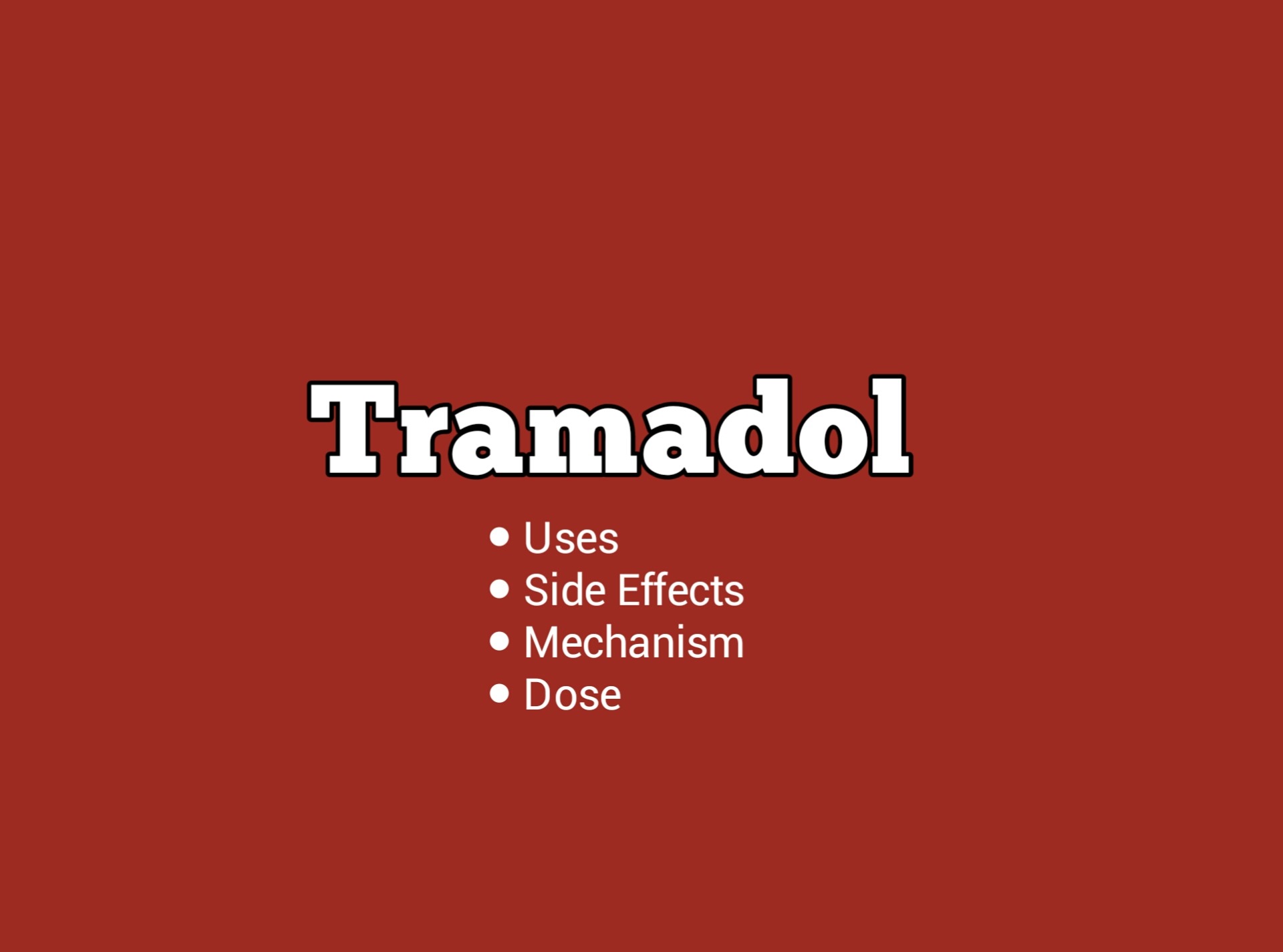
Tramadol is a prescription opioid pain medication used to treat moderate to severe pain. It works by changing the way the brain and nervous system respond to pain. While it can be effective for pain relief, tramadol also comes with some risks and potential side effects. In this article, we will take a closer look at tramadol, its uses, side effects, dosage, mechanisms, precautions, and conclusion.
Facts
- Tramadol Is A Narcotic Analgesic And Is Used To Treat Moderat to Severe Pain.
- It is a Schedule IV controlled substance that has been associated with addiction, abuse, and misuse.
- The FDA approved tramadol in March 1995
Side Effects:
The more common side effects can include:
-
- Nausea and vomiting
- Headache
- Dizziness
- Drowsiness
- Constipation
- Dry mouth
- Lack of energy
- Sweating
Less Common Side effects;
- Itching,
- diarrhea,
- rash,
- sweating,
- vertigo And
- visual disturbances.
Mechanism Of Action:
Tramadol is a synthetic pain reliever (analgesic). The exact mechanism is unknown, but it is similar to morphine. Like morphine, it binds to receptors in the brain (narcotic or opioid receptors) that are important for transmitting the sensation of pain from throughout the body to the brain.
Tramadol is not a nonsteroidal anti-inflammatory drug (NSAID), therefore, it does not have the increased risk of stomach ulcers and internal bleeding that can occur with NSAIDs.
Tramadol Dose
The recommended dose of tramadol varies depending on the severity of pain and the patient’s medical history. The usual starting dose for adults is 50-100 mg every four to six hours, with a maximum daily dose of 400 mg. The extended-release formulation should be taken once a day, with a maximum daily dose of 300 mg. It is important to follow the prescribed dosage and not to exceed the maximum recommended dose, as this can increase the risk of side effects.
This product is available in the following dosage forms:
- Tablet, Extended Release
- Tablet, Disintegrating
- Suspension
- Capsule, Extended Release
- Tablet
Precautions
Tramadol can interact with other medications, so it is important to inform your doctor of any other medications you are taking. Tramadol should not be taken with alcohol or other central nervous system depressants, as this can increase the risk of respiratory depression and other serious side effects. Tramadol should also be used with caution in patients with a history of substance abuse or addiction, as it can be habit-forming.
Conclusion
Tramadol is a potent opioid pain medication that can be effective for the treatment of moderate to severe pain. It works by binding to opioid receptors in the brain and spinal cord and inhibiting the reuptake of serotonin and norepinephrine. While it can be effective for pain relief, tramadol also comes with some risks and potential side effects, including nausea, dizziness, constipation, and fatigue. It is important to follow the prescribed dosage and to inform your doctor of any other medications you are taking. Tramadol should not be taken with alcohol or other central nervous system depressants, and should be used with caution in patients with a history of substance abuse or addiction.
- Learn more about Top 101 Most Commonly Used Drugs
- Other Drugs And Medicines

It should be avoided and diclophenac or paracetamol or this combination should be tried First for relief of pain and tramadol should Be used under the guidance of Psychiatrist or .medical officer only